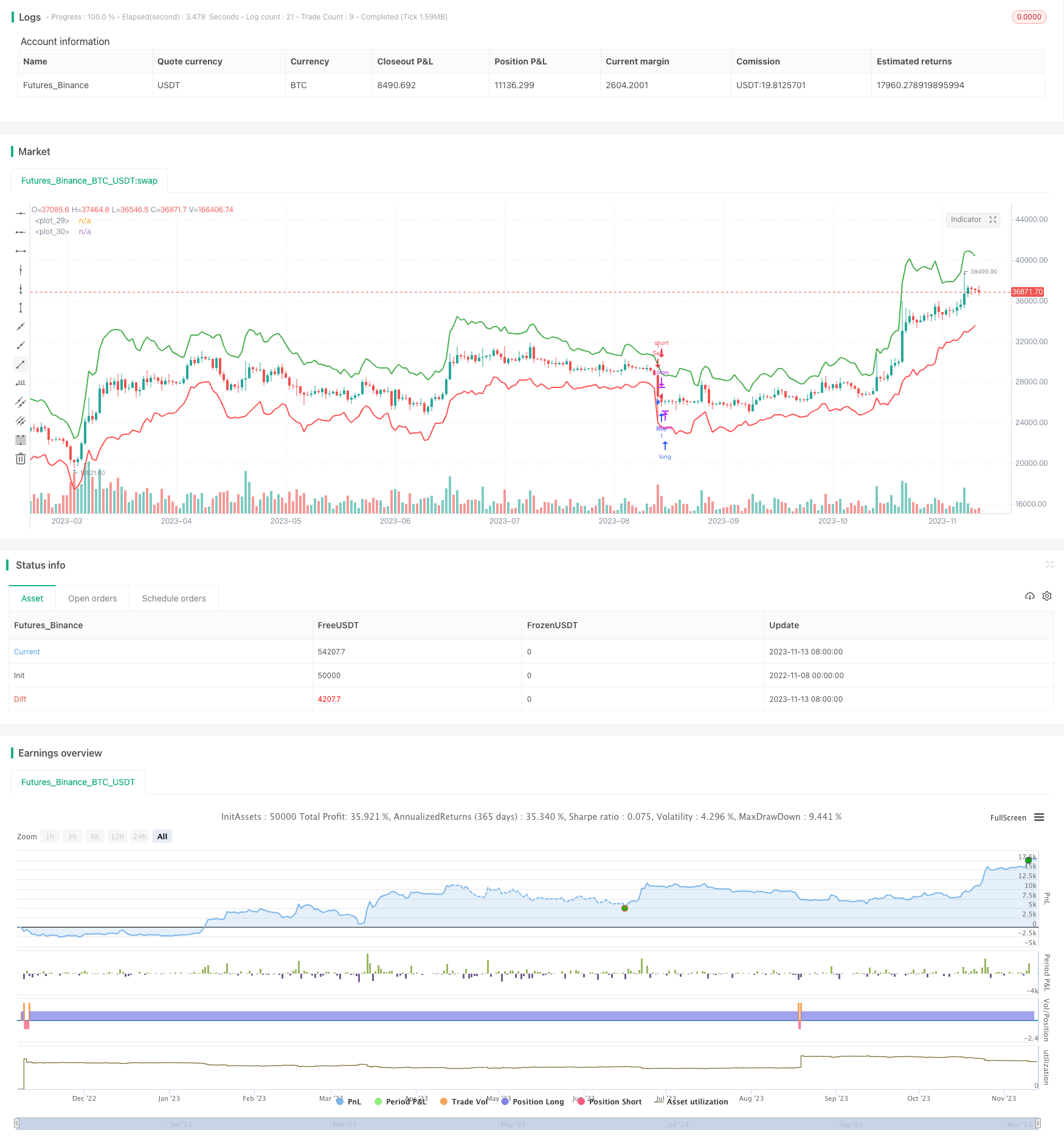
概述
双超趋势策略是一种融合双超趋势通道的短线量化交易策略。该策略通过计算真实波幅范围并构建双通道系统,实时监控价格突破通道,实现趋势追踪和反转交易。
策略原理
双超趋势策略基于超趋势指标的衍生。超趋势指标由上端带和下端带组成,用来判断价格趋势和关键支撑阻力位。双超趋势策略在此基础上构建双通道:企稳通道和破裂通道。
- 企稳通道:由基础上端带和下端带组成,用于判断当前价格趋势;
- 破裂通道:由启发式上端带和下端带组成,用于捕捉趋势反转。
策略首先计算真实波幅范围,即最高价与最低价的差价,以及平均真实波幅范围。然后根据长度参数和乘数参数计算基础通道。接着判断价格是否突破基础通道构建破裂通道,完成双通道建立。
在双通道体系下,策略通过判断价格突破不同通道来实现交易信号的产生:
- 价格上穿企稳通道下端带时,产生买入信号;
- 价格下穿企稳通道上端带时,产生卖出信号。
通过双通道的监控,可以实现趋势追踪和反转捕捉。
优势分析
双超趋势策略结合双通道系统,具有以下优势:
- 捕捉趋势反转,避免假突破。破裂通道的设定可以有效识别真实趋势反转,防止被短期噪音误导。
- 交易持续性强。相比单一超趋势,双超趋势可延长每次交易周期。
- 参数优化空间大。通过调整通道参数可以适应不同品种和周期的特点。
- 实现较低的策略神经质化。双通道机制增强了策略稳定性。
- 容易检验和优化。直观的通道显示有利于快速评估策略效果。
风险分析
双超趋势策略也存在以下风险:
- 双通道范围选取需要经验。通道过窄易造成多次无效突破;通道过宽则无法及时捕捉趋势反转。
- 场外重大事件影响。非技术驱动事件可能导致价格出现异常波动,突破通道系统失效。
- 交易频率较高。双通道结构容易增大交易频率,需要控制仓位规模。
- 参数优化难度大。双通道的参数不易同时优化,需要花费足够时间调整。
- 不能保证止损。该策略无法设置止损,存在一定风险。
可以通过调整参数范围、结合过滤条件、适当控制仓位等方法来规避上述风险。
优化方向
双超趋势策略可以从以下方面进行优化:
- 增加过滤条件,避免假突破。可以加入交易量或波动率指标等过滤信号,确保突破有效。
- 结合趋势指标,判断大趋势方向。大趋势方向一致可以避免逆势交易。
- 动态调整通道参数,适应市场变化。可以利用自适应算法优化通道参数。
- 优化退出机制,实现盈利保护。可以设定移动止损或时间退出等方式。
- 区分多空状态,做多做空分别交易。针对多头和空头阶段采用不同的参数。
- 加入量化风控,控制最大回撤。可以设置仓位控制和总体止损等方法。
通过进一步优化,可以使策略 Parameter Fitting 和 Walk Forward Analysis 效果更佳,从而获得更稳定的收益。
总结
双超趋势策略基于双通道机制实现趋势跟踪和反转捕捉,通过参数优化可以得到稳定的交易策略。但该策略也存在一定的局限性,需要引入辅助手段进行风险控制。总体来说,双超趋势策略为短线量化交易提供了一个可靠的模型框架。
策略源码
/*backtest
start: 2022-11-08 00:00:00
end: 2023-11-14 00:00:00
period: 1d
basePeriod: 1h
exchanges: [{"eid":"Futures_Binance","currency":"BTC_USDT"}]
*/
//@version=4
strategy("Double Supertrend Strategy", overlay=true)
// Define your parameters
length = input(10, title="Length")
multiplier = input(3, title="Multiplier")
// Calculate the True Range and Average True Range
trueRange = max(high - low, max(abs(high - close[1]), abs(low - close[1])))
averageTrueRange = sma(trueRange, length)
// Calculate the basic upper and lower bands
basicUpperBand = hl2 + (multiplier * averageTrueRange)
basicLowerBand = hl2 - (multiplier * averageTrueRange)
// Calculate the final upper and lower bands
finalUpperBand = basicUpperBand
finalLowerBand = basicLowerBand
finalUpperBand := close[1] > finalUpperBand[1] ? max(basicUpperBand, finalUpperBand[1]) : basicUpperBand
finalLowerBand := close[1] < finalLowerBand[1] ? min(basicLowerBand, finalLowerBand[1]) : basicLowerBand
// Determine if we're currently in an uptrend or downtrend
uptrend = close > finalLowerBand[1]
downtrend = close < finalUpperBand[1]
// Plot the bands
plot(uptrend ? finalUpperBand : na, color=color.green, linewidth=2)
plot(downtrend ? finalLowerBand : na, color=color.red, linewidth=2)
// Define your conditions for entering and exiting trades
if (uptrend)
strategy.entry("Buy", strategy.long)
else if (downtrend)
strategy.entry("Sell", strategy.short)